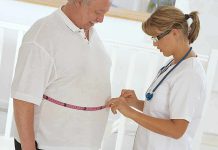
Ensuring precise blood pressure measurements and trends can prevent major health misdiagnoses. Discover the best practices to achieve accurate assessments.
At a Glance
- Errors in BP measurement can misguide clinical judgment.
- Proper technique and equipment are vital for accuracy.
- Automated devices reduce human error but still need proper setup.
- Improvement requires education, technology, and process adjustments.
Common Errors in Blood Pressure Measurement
Blood pressure (BP) measurement mistakes are common, affecting clinical decisions significantly. A study highlights common barriers in primary care, involving equipment, staff training, and workflow constraints. It’s more important than ever for patients to advocate for themselves, especially if they are also self-montitoring on a regular basis.
Staff often lack proper training, and multifaceted tasks can lead to oversight in BP measurement. Environment doesn’t always come into play. A tech in a cardiologist office is frighteningly just as likely to make an error as a tech in another office. Equipment issues, such as incorrect cuff size and seating, also contribute significantly to inaccuracies. Patient-related factors, like anxiety and physical conditions, also affect BP readings.
High blood pressure, if untreated, can damage your heart & brain & lead to health problems. High blood pressure raises your risk for heart disease & stroke, which are leading causes of death in the US. Learn how to prevent high blood pressure: https://t.co/ZK07Eg8txA. #FAQFriday pic.twitter.com/UGCoXJGbA1
— CDC (@CDCgov) February 28, 2020
Implementing Proper Techniques
Training programs play a crucial role in enhancing measurement accuracy. Adhering to standardized guidelines is essential to minimize errors. Validated semi-automated or upper arm cuff devices are preferred for reducing observer error, according to the Journal of Hypertension. “Many measurement errors can be minimized by appropriate patient preparation and standardized techniques. Validated semi-automated or automated upper arm cuff devices should be used instead of auscultation to simplify measurement and prevent observer error.”
Proper patient preparation includes considering factors such as recent consumption of food, caffeine, or nicotine. These factors can skew BP results. Ensuring the patient is at rest and using a validated device aids in obtaining reliable readings.
Role of Technology and Systems Change
Automated office BP devices offer an efficient way to take multiple readings. However, accurate results require appropriate procedure adherence, including correct cuff placement and patient posture. These systems can help mitigate the inaccuracies derived from human action, yet the process needs refinement through training and vigilant monitoring.
Continuous improvements in BP measurement techniques ensure valuable and effective health assessments. Encouraging systematic change through enhanced training, technology integration, and mindful practices benefit all stakeholders in healthcare.
Bottom line? While your doctors are highly trained, they are human and their equipment can malfunction. Speak up if you feel shocked or hesitant about a reading you receive in a healthcare office.









